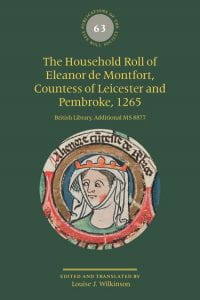Louise Wilkinson, who joined the University of Lincoln in June 2020 as Professor of Medieval Studies, recently celebrated the publication of her new book, The Household Roll of Eleanor de Montfort, Countess of Leicester and Pembroke, 1265: British Library Additional MS 8877 (The Pipe Roll Society new series 63, 2020). She was interviewed by Dr David Musgrove of the BBC History Magazine for a podcast as part of the BBC History Extra series. Eleanor de Montfort was the wife of Simon de Montfort, earl of Leicester, the leading figure in the baronial regime that tried to dominate England during the Second Barons’ War of 1263-7. Eleanor was also the sister of King Henry III and the aunt of the Lord Edward (the future King Edward I). This placed Countess Eleanor at the very heart of English political affairs in 1265, the year covered by her extant household roll. 1265 began with the Montforts’ fortunes riding high, with King Henry III and the Lord Edward both in their custody. In the summer, Earl Simon was killed at the battle of Evesham on 4 August by a force led by the Lord Edward, and King Henry III was restored to liberty and to full authority. In October, Countess Eleanor surrendered Dover castle to the Lord Edward after a brief siege and left England, permanently, for exile in France.
In the interview with Dr Musgrove, Louise discussed the eating habits of the medieval aristocracy, and what life was like in Countess Eleanor’s great household for the countess and those who served her at the castles of Odiham, Portchester and Dover.

For David’s blog and a podcast of his interview with Louise, click here.
